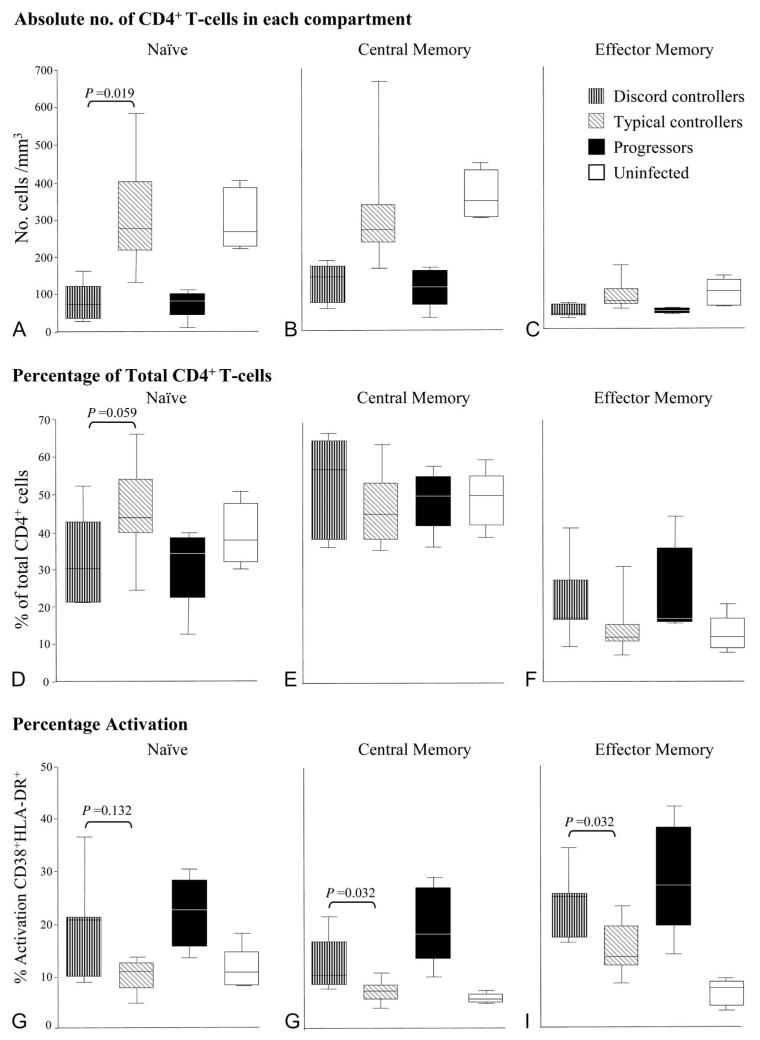FIGURE 2.
Representation of CD4+ T-cell subsets by patient group. Patients analyzed included 7 patients with discord controller phenotype [median (IQR) for viral RNA load 675 (128–1320) copies/mL, CD4+ T-cells/mm3 337 (267–400)]; 12 patients showing the typical controller phenotype [viral RNA load 268 (116–926) copies/mL, CD4+ T-cells/mm3 815 (691–971)], 5 progressors [viral RNA load 60,683 (28,603–155,518) copies/mL, CD4+ T-cells/mm3 309 (296–339)], and 5 uninfected subjects. Progressors: age 35 (30–48) years, female 40%, CD4+ T-cell count 309 (287–346) cells/mm3, HIV-1 RNA load 60,682 (23,947–232,854) copies per milliliter, all reported as median (range). Absolute numbers of cells in CD4+ T-cell subsets are shown in (A) naive (CD45RA+CD62L+), (B) central memory (CD45RO+CD62L+), and (C) effector memory (CD45RO+CD62L−). Percentage of cells in CD4+ T-cell subsets compared with total CD4+ T-cell pool are shown for (D) naive, (E) central memory, and (F) effector memory. Percentage activation of cells in CD4+ T-cell subsets (as percentage of total cells in that subset) by patient group is shown in (G–I). Each central bar represents the median value, each box represents the IQR, and the whiskers represent the minimum and maximum values. Statistical analysis employed a Mann–Whitney U test.

